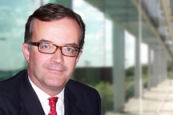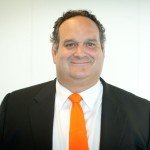At September’s Reinsurance Rendez-Vous in Monte Carlo, Carrier Management spoke with executives from Guy Carpenter, Willis Re International, Lloyd’s of London, Litmus Analysis, Aon Benfield and ANV Holdings BV. Here are some highlights.
 Paradigm Shift
Paradigm Shift
“We estimate that secondary capital sources supporting the likes of insurance-linked securities and industry loss warranties make up a little less than 20 percent of the catastrophe limits purchased. This may represent a paradigm shift, and we can see that percentage build to anywhere above 50 percent over time.”
Nick Frankland, European Head, Guy Carpenter
 ‘Grow the Cake’
‘Grow the Cake’
“Overall, the industry is very highly capitalized, and the challenge is how to stimulate more growth. A lot of people are talking about what it would take to turn the market. People variously talk about $100 billion cat losses, the end of quantitative easing, an increase in interest rates, a coming to end of the reserve releases. But those are all short-termish factors. The biggest challenge is how to actually grow the cake for everybody.”
James Vickers, Chairman, Willis Re International
Encoding Disaster Resilience
“Society as a whole is struggling with the issue of disaster resilience. When we look at the economic losses around the world that are happening and at how much is insured, it’s pitiful…[P]eople who are concerned about disaster resilience and global climate change have been looking for some way to stimulate society as a whole to take disaster resiliency more seriously, and they’ve alighted upon this concept of trying to encode disaster resilience in the financial system.
“The insurance industry is the only industry where disaster resilience is actually measured and financially reported. All insurance companies and reinsurance companies report their 1-in-100 and 1-in-200 numbers. The idea is that if other banks and businesses as a whole have to report these numbers they become clear, they become valued, and disaster resilience begins to be recognized as an asset.”
James Vickers, Chairman, Willis Re International
 Insurance Gap
Insurance Gap
“I would say at the moment—to be slightly controversial—that the gap between the risks that big businesses are facing and the insurance products that the insurance industry is offering is slightly too wide, and the insurance industry has got to get itself into a position where it’s even more relevant for the risk management functions of these big companies.”
John Nelson, Chairman, Lloyd’s of London
Right Culture
“If we can create a much more diverse nationality ‘pot’ within the underwriting community, then inevitably we are going to see more ideas and more solutions coming up for different risks around the world. It’s a long-term thing, but it’s getting the culture in the right place to do that.”
John Nelson, Chairman, Lloyd’s of London
 Big Advantage?
Big Advantage?![]()
“There’s a lot of talk that the bigger players are being positively selected versus the smaller players…However, our own view is that that’s an oversimplification…Insurance buyers are also conscious of the market power of the big reinsurers in a negative sense that they’re going to be overly beholden to the big companies. Number one, they don’t particularly want to put all their eggs in one, or two, or three reinsurers’ baskets. They have a certain interest in maintaining their relationships with smaller or more specialized players.”
Stuart Shipperlee, Senior Partner, Litmus Analysis
Softening Contagion
“All the talk here means it’s not going to be a hard market in 2015, that’s for sure. Softening may tail off, but it’s already gone down quite a long way…In my mind the bigger issue is there’s already some leakage of the soft market into casualty, away from property cat, because all the capacity is saying that ‘property cat is underpriced; let’s do a lot more casualty business.’ Or some of it is. That inevitably leads to ‘softening contagion,’ if you will.”
Stuart Shipperlee, Senior Partner, Litmus Analysis
 Multiyear Contracts
Multiyear Contracts
“Increasingly, we’ve been employing, and the market is now embracing, a willingness to offer multiyear products—generally, two to three years. It’s difficult to go beyond three years, not because you couldn’t do it but because as much as everyone thinks ‘my exposure is consistent or my situation is the same,’ I haven’t seen a situation where, within a three-year time horizon, there isn’t a material change in exposure that would require almost a total cancel and rewrite of the program.”
David Priebe, Vice Chairman, Guy Carpenter
Government Transfer
“If our government started managing the country as a business, they would recognize that, ‘I can’t keep taking on this liability [of post-disaster financing]. I need to start transferring it.’ The good news is we’ve now created a global capital market that understands this risk and is willing to price this risk on a very efficient basis, so that it now makes more sense to transfer it rather than do post-loss financing. We’ll see what happens with flood in the U.S. if the NFIP [National Flood Insurance Program] actually goes out and starts transferring risk into the private market. [As legislated,] they now have the ability to do that.”
David Priebe, Vice Chairman, Guy Carpenter
Capital Deployment
“I think there’s any number of ways to deploy it [capital] outside of the property-cat market, where a lot of it is currently deployed. If you look at some of the challenges we’re facing as an industry, I think this is the biggest question there is: How do we take that level of capital and deploy it in new and different ways; whether that is taking products from one geography and introducing and rolling them out in a different part of the world, or to a different customer segment?”
Michael Moran, Chief Operating Officer, Aon Benfield
Need for Innovation
“There are a lot of risks that currently exist that are being held by corporates, that are being held by governments, so I think it’s worthwhile for us to be thinking about innovation and new products to deploy that capital.”
Michael Moran, Chief Operating Officer, Aon Benfield
 Mouths to Feed
Mouths to Feed
“This capital is here to transfer risk, and I think the reinsurance industry is going to go through some dramatic changes right now…All of the mechanisms we have built in the reinsurance industry are to serve an insurer who’s ultimately serving an end user, or client, who buys an insurance policy. There’s been a lot of ‘frictional cost’ and mouths to feed in that process, and that should only happen if value is brought at each and every step…With this new or alternative capital, it’s going to bring efficiency to the marketplace, and it’s going to take away some of these extra mouths because we can’t afford them anymore and the clients are not going to pay for it, unless it brings sincere value.”
Matt Fairfield, Founder and CEO, ANV Holdings BV
No Google
“[B]uilding a business is not one easy fell swoop. We don’t have the Google of insurance—it’s just working very hard, making the right decisions, making mistakes along the way, fixing those mistakes and moving forward.”
Matt Fairfield, Founder and CEO, ANV Holdings BV





















 The Future of Knowledge in Insurance: From Training to AI-Powered Productivity
The Future of Knowledge in Insurance: From Training to AI-Powered Productivity  The Hardest Part of Innovation in Insurance Isn’t Technology; It’s Culture
The Hardest Part of Innovation in Insurance Isn’t Technology; It’s Culture  Unpacking a Consumer Intervenor’s Novel Idea
Unpacking a Consumer Intervenor’s Novel Idea  Berkshire Hathaway Announces Leadership Appointments: New CEO at GEICO
Berkshire Hathaway Announces Leadership Appointments: New CEO at GEICO 





